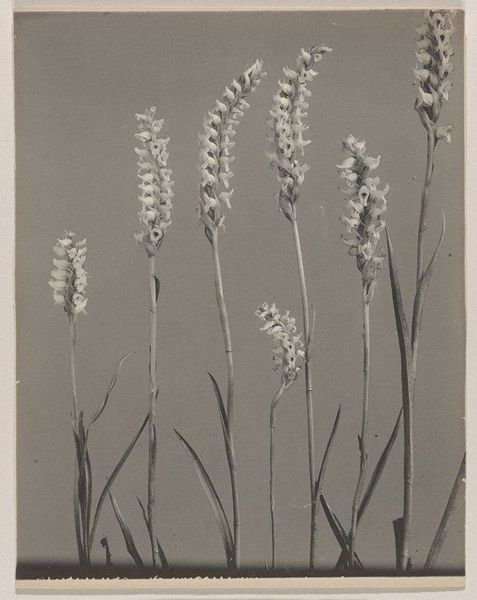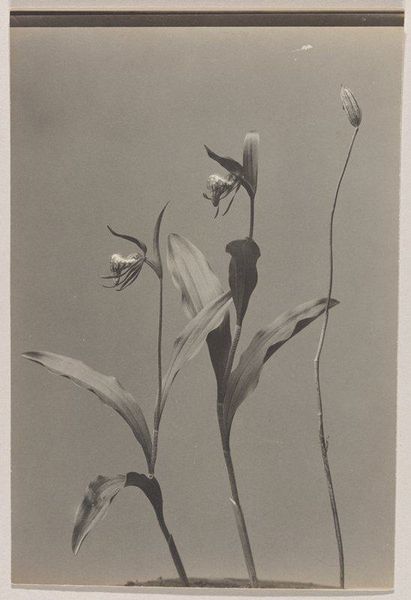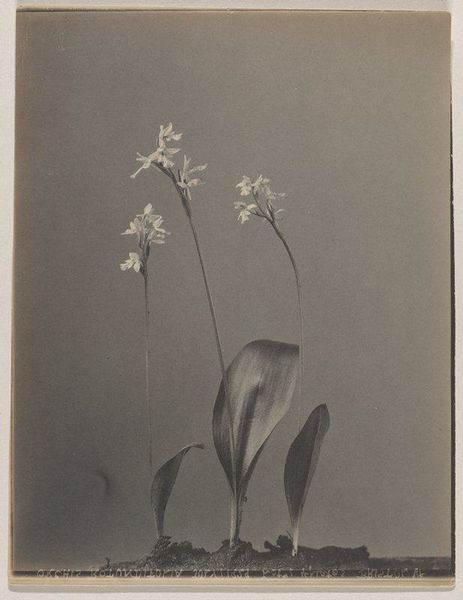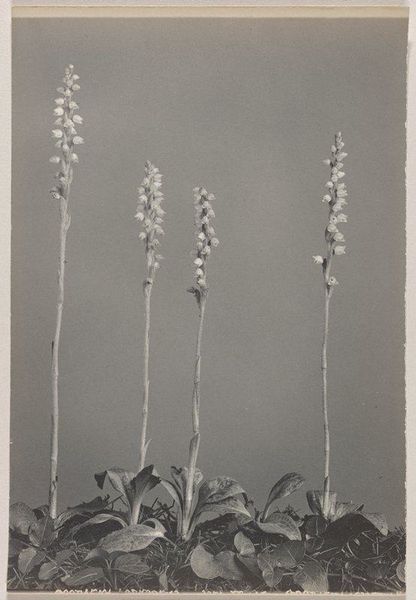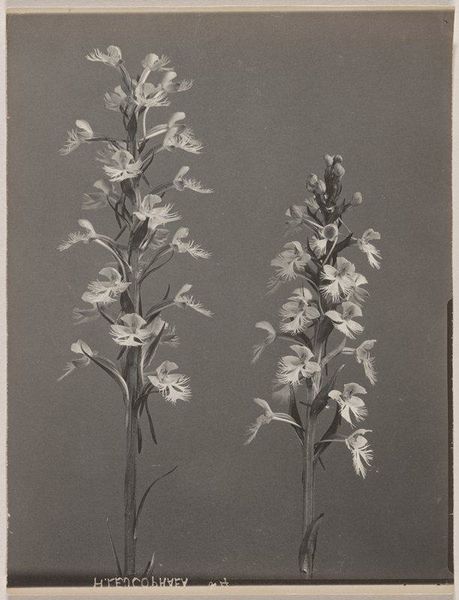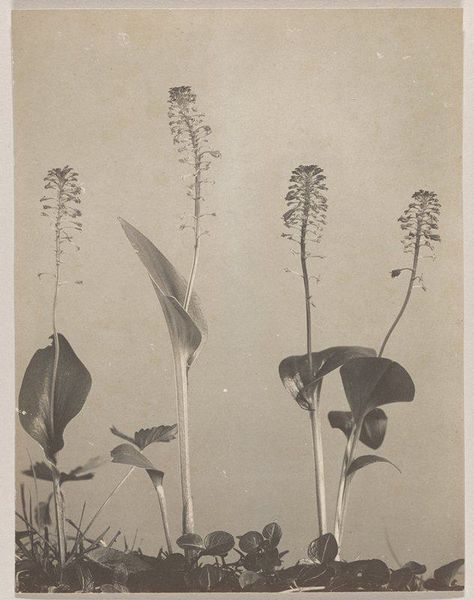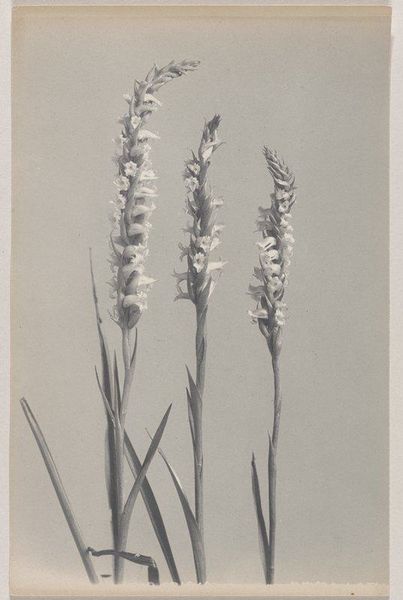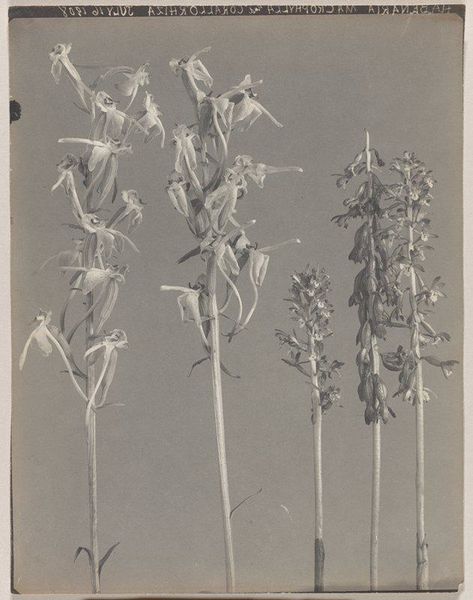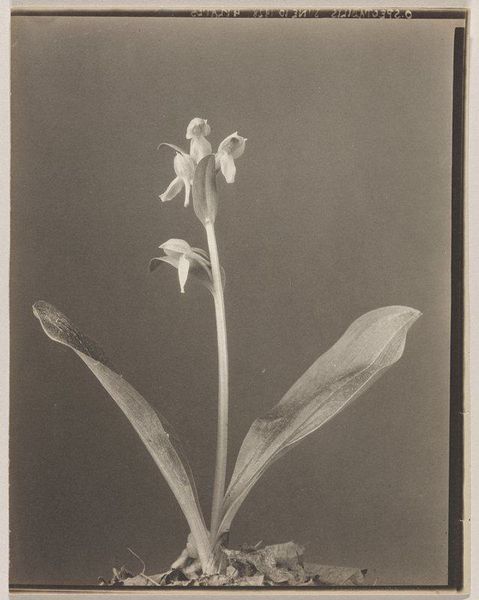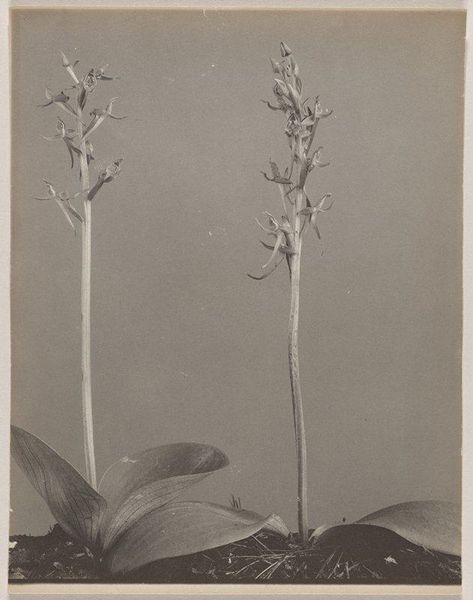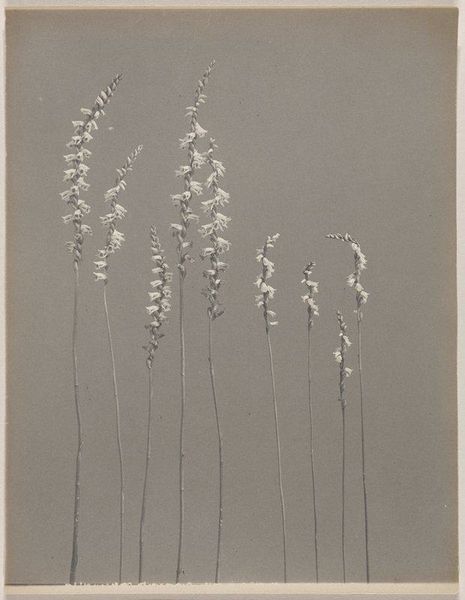
photography, gelatin-silver-print
#
photography
#
gelatin-silver-print
#
united-states
#
watercolour illustration
#
naturalism
#
watercolor
Dimensions: 9 9/16 x 7 5/8 in. (24.29 x 19.37 cm) (image)9 15/16 x 7 5/8 in. (25.24 x 19.37 cm) (sheet)
Copyright: No Copyright - United States
Curator: Examining Edwin Hale Lincoln’s 1931 gelatin silver print, "Habenaria clavellata- Club Spur Orchid," I am immediately struck by its starkness. Five orchids, rigidly arranged, are presented with almost clinical precision. What is your take on this, coming to it fresh? Editor: It's a very striking composition, certainly. The high contrast and sharp focus make it almost hyperreal. I'm curious about this focus on the process though. What materials did Lincoln use, and how might they influence our understanding? Curator: Well, we know it's a gelatin silver print, a process that, by 1931, was a widely adopted photographic method. This suggests a desire for reproducibility, and consistency. Lincoln meticulously documents each orchid; is it about scientific classification or something more? Considering he printed and potentially sold these, how does the medium’s inherent replicability tie into Lincoln's potential economic motives? Editor: So it's not just about seeing the orchids as objects of beauty, but understanding how photography as a medium shapes and disseminates knowledge about them. Did he hand-tint this photograph at all or add color? Curator: No, this particular print is in black and white. That absence is very telling: even when color photography was becoming increasingly available, he chose the graphic clarity and reproducible quality of black and white gelatin silver printing. Think about the labor that went into preparing these prints. He painstakingly made it and its intention has economic implications to disseminate botanical information widely, accessible due to its technical proficiency. The labor intensiveness underscores value, right? Editor: It does indeed. I had originally only perceived a simple still-life. Now, looking at this work I see the hand of the artist, photographic technological developments and the drive to make the subject widely accessible. Curator: Exactly. Considering those material choices opens avenues into the photograph’s intersection with culture, the photographer’s labor, and the possible consumer market for such imagery at that time.
Comments
No comments
Be the first to comment and join the conversation on the ultimate creative platform.

